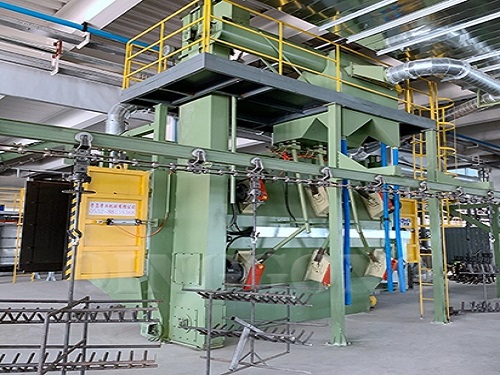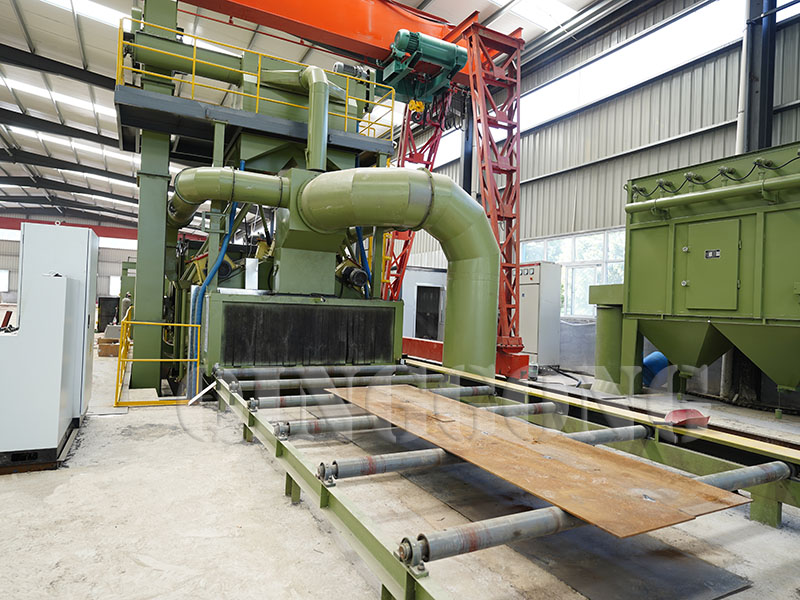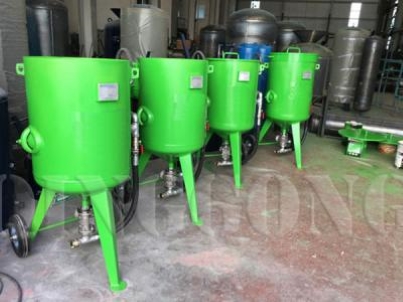Sandblasting process is a kind of dry sandblasting, whose abrasives can be steel sand, alumina, quartz sand, silicon carbide, etc., but quartz sand is the most widely used in China. According to the materials of parts, surface state and processing requirements, different abrasive materials can be selected.
There are two kinds of dry sandblasting processes: mechanical sandblasting and air pressure sandblasting. Both are divided into manual, non automatic or continuous automatic mode. Manual air pressure sandblasting machine is widely used in China, which uses various complex shapes of small and medium-sized parts.
1. Wet sandblasting process
The abrasive used in wet sandblasting process is the same as that of dry sandblasting. The abrasive can be mixed with water to form mortar. The abrasive is usually 20% - 35% and the mortar should be stirred continuously to prevent sinking. Press the mortar into the nozzle and spray it to the parts by air compression. The sand and water can be put into the tank respectively and mixed before flowing to the nozzle, and then spray it to the parts. In order to prevent the corrosion of steel parts, sodium nitrite and other corrosion inhibitors should be added in water. In addition, the sand should be dried before next use.
There are many kinds of equipment for wet sandblasting machines, and the most commonly used one is the blasting room.
2. Shot blasting process
Shot blasting process is similar to sandblasting process, but it substitutes steel shots or glass shots for abrasives in sandblasting. Shot blasting can produce pressure stress on parts, and there is no dust pollution containing silicon. This process is mainly used for:
(1) Make the parts produce pressure stress to improve the fatigue strength and stress corrosion resistance.
(2) Check and correct the twisted thin-walled parts.
(3) It can take the place of general cold and hot forming processes to process the large thin-walled aluminum parts, which can avoid the high tensile stress on the surface of the parts and form favorable pressure stress.
It should be noted that the service temperature of the parts after shot blasting should not be too high, otherwise, the pressure stress will be eliminated and the expected effect will be lost. The limit of using temperature depends on the material of the parts. For example, the temperature of steel parts is about 260~290 ℃, and that of aluminum parts is about 170 ℃.
A. Types of shots
(1). Cast steel shots: The hardness is generally 40-50 HRC. When processing hardware metal, the hardness can be increased to 57-62 HRC.
Cast steel shots have good toughness and are widely used, besides, the service life is several times as long as that of cast iron shots.
(2). Cast iron shots: The hardness is 58-65 HRC. Cast iron shots are mainly used in occasions where the shot blasting strength is not required because they are brittle and easy to be broken, the service life is short and the application scope is not wide.
(3). Glass shots: The hardness is lower than the former two kinds of shots, and they are mainly used in stainless steel. Titanium, aluminum, magnesium and other materials that do not allow iron contamination can also be used for secondary processing after shot blasting to remove iron contamination and reduce surface roughness of parts.
B. Shot blasting and sandblasting processes
For the shot blasting requiring pressure stress on the surface of parts, it must have enough coverage, which is quite difficult.
In addition, it is difficult to make quantitative judgment, therefore, the method of controlling shot blasting strength is often adopted, which is the method requiring a certain sandblasting degree, that is, the required pressure stress value can be obtained after reaching a certain sandblasting strength. The shot blasting strength is mostly in accordance with the j442 of American SAE standard.
(1) Shot size: the larger the shot, the greater the impact energy, the greater the shot blasting strength, and the lower the shot blasting coverage. Therefore, on the premise of producing the required shot blasting strength, it is beneficial to reduce the shot size as much as possible.
In addition, the selection of shot size is also limited by the shape of shot blasting parts, and its diameter should not exceed half of the radius of the inner circle of the groove. The particle size of the shot in shot blasting is generally 2.00-0.30mm
(2) Hardness of the shot: When the hardness is greater than the hardness of the parts, the change of the shot hardness does not affect the shot blasting strength. On the contrary, the decrease of shot hardness will reduce the shot blasting strength.
(3) Shot speed: When the shot speed is increased, the shot blasting strength will be increased, but if the shot speed is too high, the crushing amount will increase.
(4) Blasting angle: When it is vertical, the shot blasting strength is the highest, therefore, shot blasting is generally carried out in this state. If it is necessary to peen at a small angle due to the shape of the parts, the size and speed of shots shall be appropriately increased.
(5) Shot blasting crushing: the shot blasting strength of crushing shots is low, so the crushing shots should be removed frequently to ensure that the integrity of shots is not less than 85%. In addition, the shot with sharp angle will scratch the parts.
 EN
EN
 fr
fr  de
de  es
es  it
it  ru
ru  pt
pt  ar
ar  th
th  pl
pl  ro
ro 


